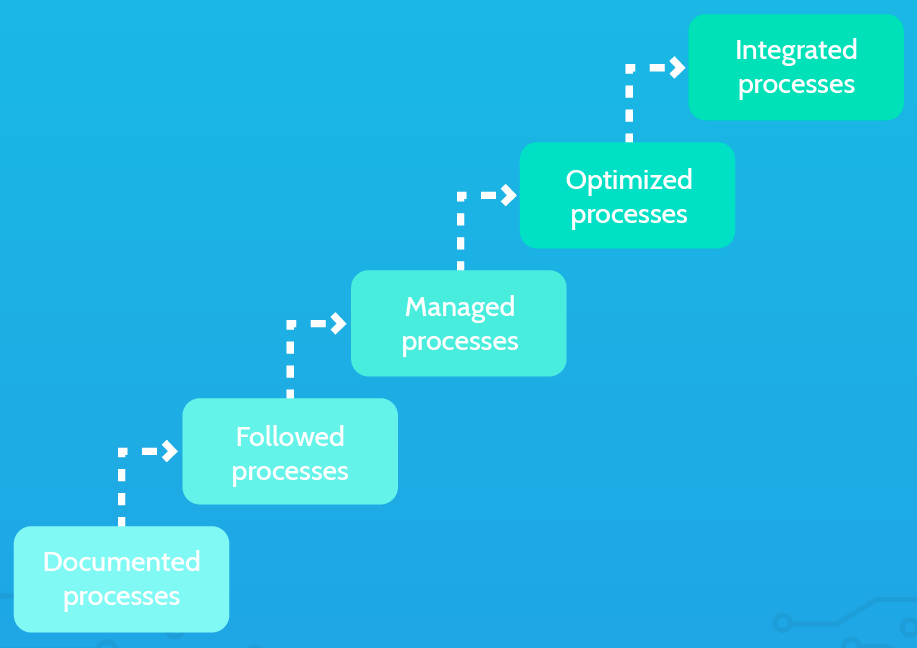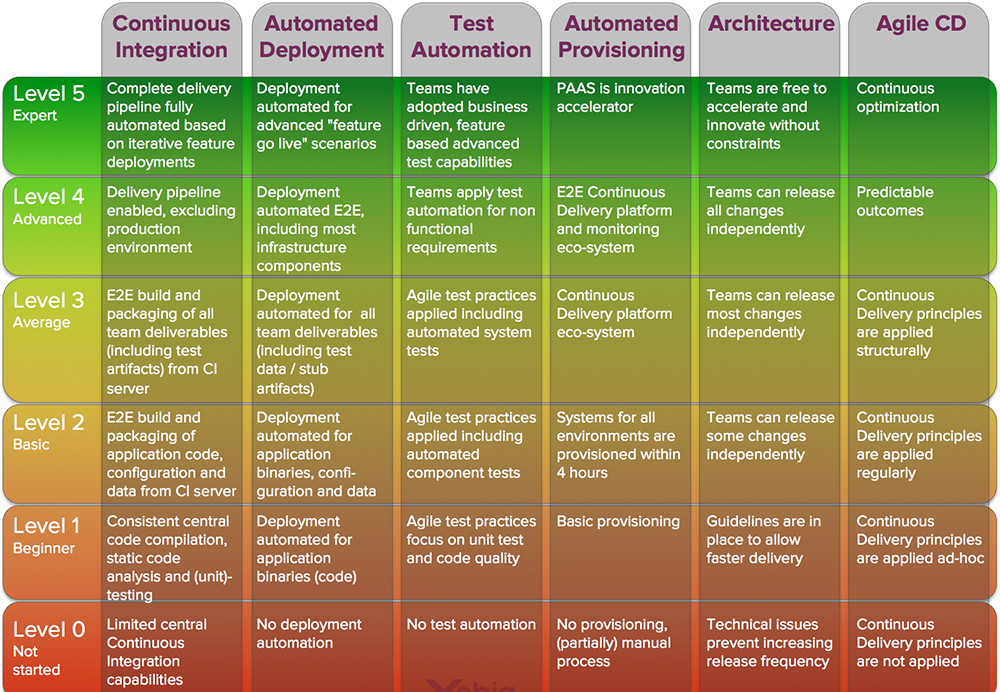A maturity model is a tool for evaluating how the processes, people, and systems that drive a product are performing.
A maturity model will give you tiered levels of achievement for objectively assessing the maturity in every aspect of your product and teams.
Models define effectiveness and sophistication levels and can pinpoint a person, team, project or company’s current position within the model.
Maturity models are an important strategic prioritisation tool because they provide flexible performance assessment and monitoring that can reveal valuable information about your company’s health and potential.
While a model won’t fix inefficiencies themselves, it can identify areas where you aren’t operating at standard and allow you to determine strategies that can improve your operations and processes.
3 Types Of Maturity Models
Business Process Maturity Model (BPMM)
The Business Process Maturity Model’s roots can be traced back to the Process Maturity Framework (PMF) created by Watts Humphrey at IBM in the 1980s.
The process maturity model explores the ways to introduce quality practices in software development. Humphrey and his colleagues introduced incremental stages to adopting best practices in software organisation.
The PMF served as the groundwork for the development of the Capability Maturity Model (CMM) for software in 1991. CMM then became the foremost standard for appraising the capability of software development organisations.

Initial
Inconsistent management practices or teams that react to crises rather than predict them.
Managed
Teams and businesses have a management foundation, but the individual teams within the business still work in silos with minimal collaboration or evidence of incorporating improvement strategies.
Standardised
The business is aware of its processes and is working toward consistency and uniform delivery.
Predictable
Organisations use their process infrastructure and asset capabilities to achieve reliable results by controlling the variations within their outputs.
Innovating
Your company is continuously improving and focused on innovation.
Agile ISO Maturity Model
By standardising the levels, agile ISO models set more clearly defined expectations determined by an international body.
Agile Maturity Model helps organisations understand their current practices and work toward improving them with the goal of increasing ability to respond to changing business conditions and better harnessing innovation.

Level 1: Documented Processes
Your processes are documented -in any form from a Word doc, to an Excel spreadsheet. Knowing what your processes are for different areas of your business is the first step to taking a process-led approach.
Level 2: Followed Processes
There’s little point in having documented processes if they’re not put into action. Processes have to be followed and used regularly by your team. This means that work gets done in the best way every time, and also means that the teams who follow them will be able to point out obvious flaws and inefficiencies.
Level 3: Managed Processes
Processes should shape and inform the way in which you conduct your operations. You need to structure things to allow processes to play a big role. This could include getting dedicated process management software, setting up a specialist process team, harvesting and analysing the data from the processes.
Level 4: Optimised Processes
By now you have the infrastructure in place to yield rich accurate data. This lets you begin to understand your organisation in a transparent manner– identifying every event as and when it occurs. This is an accurate model of your business and lets you know not just what happened this week, but what will happen next.
Level 5: Integrated Processes
The core business has been systemised in line with business needs, you can begin to develop and devise new processes to link different stakeholders. These could be processes between leadership and staff, they could be internal peer audit systems, or they could be processes which bring customers or business partners into the heart of the organisation.
Once the organisation has been systemised, the processes can be leveraged to improve the nature, culture, and awareness of the organisation. eg you could reduce your carbon footprint or make your supply chain more sustainable.
Capability Maturity Model (CMM)
The capability maturity model assesses the maturity of your organisation, or software development systems, by comparing it to best industry practices.
By measuring results and assigning maturity levels, companies and development teams can use their models to evaluate their awareness of business processes, effective management techniques and areas for improvement.
Continuous Delivery Maturity Model Example
Continuous delivery is all about reducing risk and making sure business get their return on investment as soon as possible. It is about removing focus from repetitive and risky tasks to devoting all you effort into delivering business value.
Continuous delivery has become increasingly popular. Implementing it is often considered to be difficult and risky
The road to continuous delivery is paved with many small goals, each of which deliver value by themselves. A maturity model will serve as a guide on this road.
